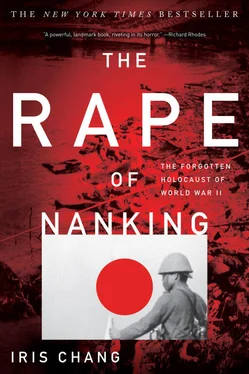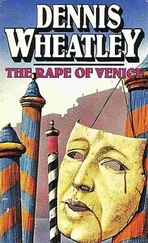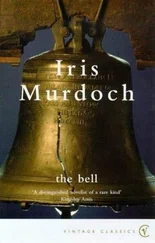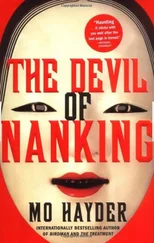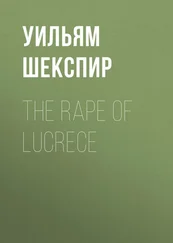The Japanese would later justify their actions by saying that they had to execute POWs to save their own limited food supply and prevent revolts. But nothing can excuse what the Japanese did to hundreds of thousands of helpless Chinese civilians in Nanking. They had no weapons and were in no position to mutiny.
Not all Chinese, of course, submitted easily to extermination in Nanking. The Rape of Nanking is a story not only of mass victimization but of individual strength and courage. There were men who clawed their way out of shallow graves, or clung to reeds for hours in the icy Yangtze River, or lay buried for days under the corpses of friends before dragging their bullet-ridden bodies to the hospital, sustained only by a tenacious will to survive. There were women who hid in holes or in ditches for weeks, or ran through burning houses to rescue their babies.
Many of these survivors later gave their stories to reporters and historians or testified at the war crimes trials held in Nanking and Tokyo after the defeat of Japan. When interviewing several of them during the summer of 1995, I learned that many of the Chinese victims of the Japanese were apparently murdered for no other reason than pleasure. Such was the observation of Tang Shunsan, now in his eighties, a Nanking resident who had miraculously survived a Japanese killing contest back in 1937.
Unlike thousands of hapless civilians who were bombed out of their homes and stranded on the streets of Nanking, Tang had actually secured a haven during the massacre. Then a twenty-five-year-old shoemaker’s apprentice, Tang hid in the home of two fellow apprentices on Xiaomenkou, a tiny street in the northern part of the city. His friends (known to Tang as “Big Monk” and “Little Monk”) had camouflaged the doorway of their house by removing the door and filling the open space with bricks so that it resembled, from the outside, a smooth, unbroken wall. For hours they sat on the dirt floor of the house, listening to the screams and gunshots outside.
Tang’s problem began when he experienced a sudden urge to see a Japanese soldier with his own eyes. All his life he had heard that the Japanese looked like the Chinese, but never having been to Japan, he had been unable to verify this. Here was a golden opportunity to see for himself. Tang tried to suppress his curiosity but finally succumbed to it. He asked his friends to remove the bricks from the doorway to let him out.
Not surprisingly, his friends pleaded with Tang not to go, warning him that the Japanese would kill him if they caught him wandering around outdoors. But Tang was not so easily dissuaded. Big Monk and Little Monk argued with him at length but finally gave up trying to change his mind. Risking their own safety, they removed the bricks from the door and let Tang out.
As soon as Tang stepped outside, he began to regret it. A scene of almost surreal horror gripped him. He saw the bodies of men and women—even the bodies of small children and the elderly—crumpled before him in the streets. Most had been stabbed or bayoneted to death. “Blood was splattered everywhere,” Tang recalled of that horrible afternoon, “as if the heavens had been raining blood.”
Then Tang saw another Chinese person in the street and, behind him, a group of eight or nine Japanese approaching in the distance. Instinctively, Tang and the stranger jumped into a nearby rubbish bin, heaping straw and paper over their heads. They shivered from cold and fear, causing the sides of the bin to shiver with them.
Suddenly the straw was knocked away. A Japanese soldier hovered overhead, glaring at them, and before Tang quite knew what was happening the soldier had decapitated the person next to him with his sword. Blood gushed from the victim’s neck as the soldier reached down and seized the head as a trophy. “I was too frightened to even move or think,” Tang remembered. “I thought of my family and knew that if I died here, they would never know what happened to me.”
Then a Chinese voice ordered Tang out. “ Gun chu lai! (Roll out!),” exclaimed a Chinese man whom Tang suspected was a traitor for the Japanese. “ Gun chu lai, or I’ll kill you!”
Tang crawled out of the trash bin. Seeing a ditch by the road, he wondered whether he should fling himself into it and attempt an escape but found that he was too frightened even to move his legs. Then he saw a group of Japanese soldiers herding hundreds of Chinese people down the street. Tang was ordered to join them. As he marched next to the other prisoners, he saw corpses sprawled on both sides of the streets, something that made him feel so wretched he almost welcomed death.
Before long Tang found himself standing near a pond and a freshly dug, rectangular pit filled with some sixty Chinese corpses. “As soon as I saw the newly dug pit, I thought they might either bury us alive or kill us on the spot. I was too frightened to move so I stood there motionless. It suddenly occurred to me to jump into the pit but then I saw two Japanese military wolf dogs eating the corpses.”
The Japanese ordered Tang and the other prisoners to line up in rows on each side of the mass grave. He stood in one closest to the edge. Nine Japanese soldiers waited nearby, soldiers who presented an imposing sight to Tang with their yellow uniforms, star-studded caps, and shiny bayonets and rifles. At such proximity, Tang could see that Japanese men really did resemble Chinese men, although at this point he was too frightened to care.
Then, to Tang’s horror, a competition began among the soldiers—a competition to determine who could kill the fastest. As one soldier stood sentinel with a machine gun, ready to mow down anyone who tried to bolt, the eight other soldiers split up into pairs to form four separate teams. In each team, one soldier beheaded prisoners with a sword while the other picked up heads and tossed them aside in a pile. The prisoners stood frozen in silence and terror as their countrymen dropped, one by one. “Kill and count! Kill and count!” Tang said, remembering the speed of the slaughter. The Japanese were laughing; one even took photographs. “There was no sign of remorse at all.”
A deep sorrow filled Tang. “There was no place to run. I was prepared to die.” It saddened him to think that his family and loved ones would never find out what happened to him.
Lost in such thoughts, Tang snapped back to reality when the commotion started. Two rows up from him a pregnant woman began to fight for her life, clawing desperately at a soldier who tried to drag her away from the group to rape her. Nobody helped her, and in the end the soldier killed her, ripping open her belly with his bayonet and jerking out not only her intestines but a squirming fetus. That, Tang believes, should have been the moment for them all to rebel, to do something , to fight back and try to kill the soldiers even if they all died in the process. But even though the Chinese prisoners greatly outnumbered their Japanese tormentors and might have been able to overwhelm them, no one moved. Everyone remained eerily docile. Sad to say, of all the people around the pit, Tang remembers only the pregnant woman showing the slightest bit of courage.
Soon a sword-wielding Japanese soldier worked his way closer to Tang, until he was only one row up from him. Then Tang had a stroke of luck, which was nothing short of a miracle. When the soldier decapitated the man directly in front of Tang, the victim’s body fell against Tang’s shoulder. In keeping with the corpse’s momentum, Tang also toppled backwards and dropped, together with the body, into the pit. No one noticed.
Tang ducked his head under the corpse’s clothing. His ploy would have never worked had the Japanese stuck with their original game of decapitation. In the beginning the soldiers used the heads of their victims to keep score. But later, to save time, they killed prisoners not by lopping off heads but by slashing throats. That is what saved Tang—the fact that dozens of bodies were piling up in the pit with their heads intact.
Читать дальше
